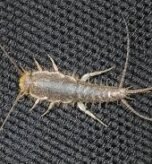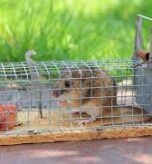A German cockroach infestation is one of the most prevalent and challenging pest problems in homes and businesses worldwide. Their ability to adapt to human environments and reproduce at an astonishing rate makes managing them a complex task. This comprehensive guide provides an in-depth look at German cockroaches, the risks they pose, and effective control strategies to help you reclaim your space.
Understanding the German Cockroach
Before you can tackle a German cockroach infestation, it is essential to understand the pest’s characteristics and behaviors.
What Does a German Cockroach Look Like?
German cockroaches are relatively small, typically measuring about half an inch long. They are light brown to tan and have two distinct, dark, parallel stripes on their back, just behind their head. While they have wings, they rarely fly, preferring to run swiftly when disturbed.
Where Do They Hide?
These pests thrive in warm, humid environments, which makes kitchens and bathrooms their favorite hiding spots. You will often find them near food and water sources, such as under sinks, behind refrigerators, or near trash cans. They can squeeze through openings as narrow as 3/8 of an inch.
Why a German Cockroach Infestation Spreads So Fast
The German cockroach is known for its exceptionally rapid reproductive rate. A single female can produce multiple egg capsules in her lifetime, with each capsule containing up to 40 eggs. The entire life cycle, from egg to a reproductive adult, can be completed in as little as 50 days. This prolific breeding means that a small problem can escalate into a severe German cockroach infestation very quickly.
The Serious Risks of a German Cockroach Infestation
Beyond their repulsive appearance, a German cockroach infestation poses significant health and sanitation risks that you should not ignore.
The Health Implications of an Infestation
German cockroaches are known carriers of various pathogens. As they travel through unsanitary places like sewers and garbage, they pick up bacteria, viruses, and parasite eggs. They can then transfer these to your food, utensils, and countertops, posing a risk of illnesses like food poisoning, dysentery, and gastroenteritis.
Furthermore, their droppings, shed skins, and saliva release particles that act as potent allergens. For people with asthma, especially children, prolonged exposure to these allergens can significantly worsen symptoms and even lead to hospital visits.
Unsanitary Conditions and Odors
A severe German cockroach infestation can make a home highly unsanitary. In addition to physical contamination, these pests produce an unpleasant, musty, and oily odor from the pheromones they release. As the population grows, the smell intensifies and can permeate furniture and walls.
How to Identify a German Cockroach Infestation
Early detection is crucial for effective management. Here are the key signs to look for.
- Visible Sightings: Spotting live cockroaches is the most direct indicator. They are primarily nocturnal, but in a large infestation, you might see them during the day.
- Droppings: Their droppings look like tiny black specks, similar to ground pepper or coffee grounds. You will find them inside cabinets, along baseboards, and near cracks.
- Egg Capsules (Oothecae): Finding these small, brownish, oval-shaped capsules is a clear sign of a breeding population.
- A Distinct Odor: A musty, oily smell that intensifies as the population grows is another concerning sign.
Comprehensive Control Strategies for a German Cockroach Infestation
Effective control requires a multi-faceted approach, often called Integrated Pest Management (IPM).
1. Sanitation and Habitat Alteration
Maintaining a clean environment is fundamental. German cockroaches cannot survive without food, water, and shelter.
- Clean Thoroughly: Regularly wipe down surfaces, vacuum crevices, and clean behind appliances.
- Store Food Properly: Keep all food, including pet food, in airtight, sealed containers.
- Manage Waste: Securely bag kitchen garbage and discard it daily.
- Reduce Moisture: Fix any leaky pipes and reduce moisture in damp areas like basements.
2. Structural Repairs and Exclusion
Preventing entry and limiting their movement is vital.
- Seal Cracks and Crevices: Use caulk to seal gaps around windows, doors, pipes, and foundations.
- Maintain Screens and Doors: Keep window and door screens in good repair.
3. Targeted Insecticide Treatments
When you have an established German cockroach infestation, insecticides are typically necessary.
- Baits (Gels and Stations): Insecticidal baits are highly effective. Cockroaches eat the bait and carry the slow-acting poison back to their nests. This creates a “cascade effect” that can eliminate the entire colony.
- Insect Growth Regulators (IGRs): IGRs disrupt the cockroach’s growth cycle, preventing nymphs from becoming reproductive adults.
- Dusts (Boric Acid, Diatomaceous Earth): These can be effective when applied correctly in out-of-the-way places like wall voids.
- Avoid “Bug Bombs”: Total-release foggers are generally not recommended. They fail to penetrate the hidden cracks where cockroaches reside and can scatter them deeper into your walls, making the problem worse.
The Importance of Professional Intervention
Given the challenges of controlling a German cockro-h infestation—their rapid reproduction, ability to hide, and resistance to insecticides—professional pest control services are often essential. Professionals have the expertise and equipment to conduct thorough inspections and apply the appropriate, targeted treatments safely. While DIY methods can offer initial help, they are rarely effective in eliminating an entire population.
Conclusion
A German cockroach infestation poses significant health risks and can quickly overwhelm a living space. While diligent sanitation and structural repairs are crucial first steps, professional intervention using targeted treatments like baits and IGRs is often necessary for complete elimination. Early detection and a sustained, systematic approach are key to reclaiming your home from these tenacious pests.



